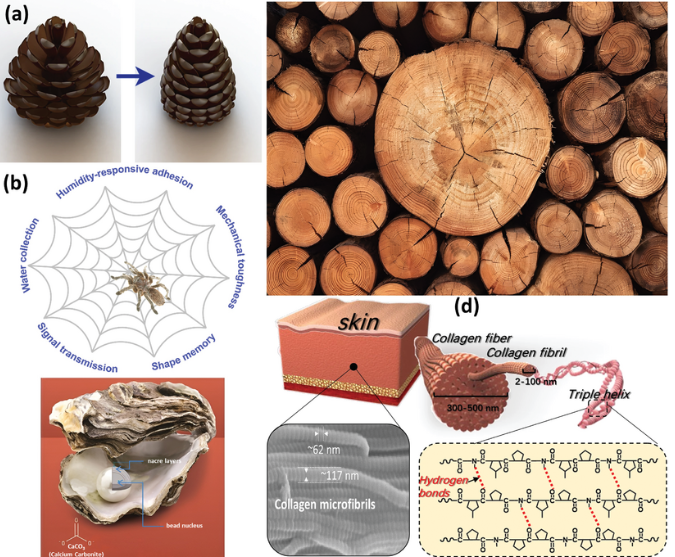3D printed micro optics: Enabling high-resolution imaging and sensing
- Aniksha Kar
- Apr 6, 2024
- 3 min read

Introduction:
In recent years, the field of optics has witnessed a remarkable transformation with the advent of 3D printing technology. One of the most intriguing applications of this technology is in the realm of micro optics, where it enables the creation of intricate optical components with unprecedented precision and customization. In this blog, we delve into the revolutionary potential of 3D printed micro optics in advancing high-resolution imaging and sensing applications.
Understanding Micro Optics:
Micro optics involves the fabrication of optical components at a microscale, typically ranging from a few micrometers to a few millimeters in size. These components include lenses, prisms, waveguides, and diffractive optical elements, among others. Traditionally, micro optics were manufactured using techniques such as lithography, etching, and precision machining, which were limited in terms of design complexity and scalability.
Enter 3D Printing:
3D printing, also known as additive manufacturing, offers a paradigm shift in the fabrication of micro optics. Unlike traditional methods, which involve subtractive processes, 3D printing builds up structures layer by layer from computer-aided designs (CAD). This additive approach allows for the creation of highly intricate geometries with minimal material wastage.
Advantages of 3D Printed Micro Optics:
1. Customization: 3D printing enables the rapid prototyping and customization of micro optics according to specific application requirements. Design parameters such as shape, size, surface texture, and refractive index can be easily modified to achieve desired optical properties.
2. Complex Geometries: Traditional manufacturing techniques often struggle to produce micro optics with complex geometries, such as freeform surfaces and non-linear structures. 3D printing, however, excels in realizing such intricate designs, opening up new possibilities for optical performance optimization.
3. Integration: With 3D printing, multiple optical components can be integrated into a single monolithic structure, eliminating the need for assembly and alignment. This integration enhances compactness, reduces weight, and improves overall system stability.
4. Cost-Efficiency: By eliminating the need for specialized tooling and complex machining processes, 3D printing offers cost advantages, especially for low-volume production runs. This makes micro optics more accessible to a wider range of applications and industries.
Applications in Imaging and Sensing:
1. Microscopy: 3D printed micro lenses and lens arrays are revolutionizing microscopy by enabling high-resolution imaging of biological samples and microstructures. The ability to tailor optical properties at the micrometer scale enhances image quality and contrast, leading to breakthroughs in biomedical research and diagnostics.
2. Spectroscopy: Micro optics play a crucial role in spectroscopic techniques such as Raman spectroscopy and fluorescence spectroscopy. By precisely controlling light dispersion and collection, 3D printed micro optical components enhance spectral resolution and sensitivity, facilitating the analysis of chemical composition and molecular structures.
3. LiDAR: Light Detection and Ranging (LiDAR) systems rely on micro optics for beam steering, focusing, and divergence control. 3D printed micro lenses and beam splitters enable compact and lightweight LiDAR sensors with improved spatial resolution and range accuracy, essential for applications in autonomous vehicles, robotics, and environmental monitoring.
4. Wearable Devices: Miniaturized optical sensors and displays are key components of wearable devices such as smart glasses, augmented reality (AR) headsets, and biomedical monitors. 3D printed micro optics enable the fabrication of lightweight and ergonomic optical modules, enhancing user comfort and immersive visual experiences.
Future Directions:
As 3D printing technology continues to advance, so too will its applications in micro optics. Future developments may include the integration of novel materials, such as metamaterials and photonic crystals, for tailored optical properties. Moreover, advancements in multi-material printing and nanoscale resolution techniques will further expand the design space and performance capabilities of 3D printed micro optics.
Conclusion:
The convergence of 3D printing and micro optics is poised to revolutionize the fields of imaging and sensing, unlocking new possibilities for high-resolution visualization and analysis across various disciplines. From healthcare and manufacturing to transportation and communications, the impact of 3D printed micro optics will be profound, shaping the future of optical technologies in the digital age.




Comments